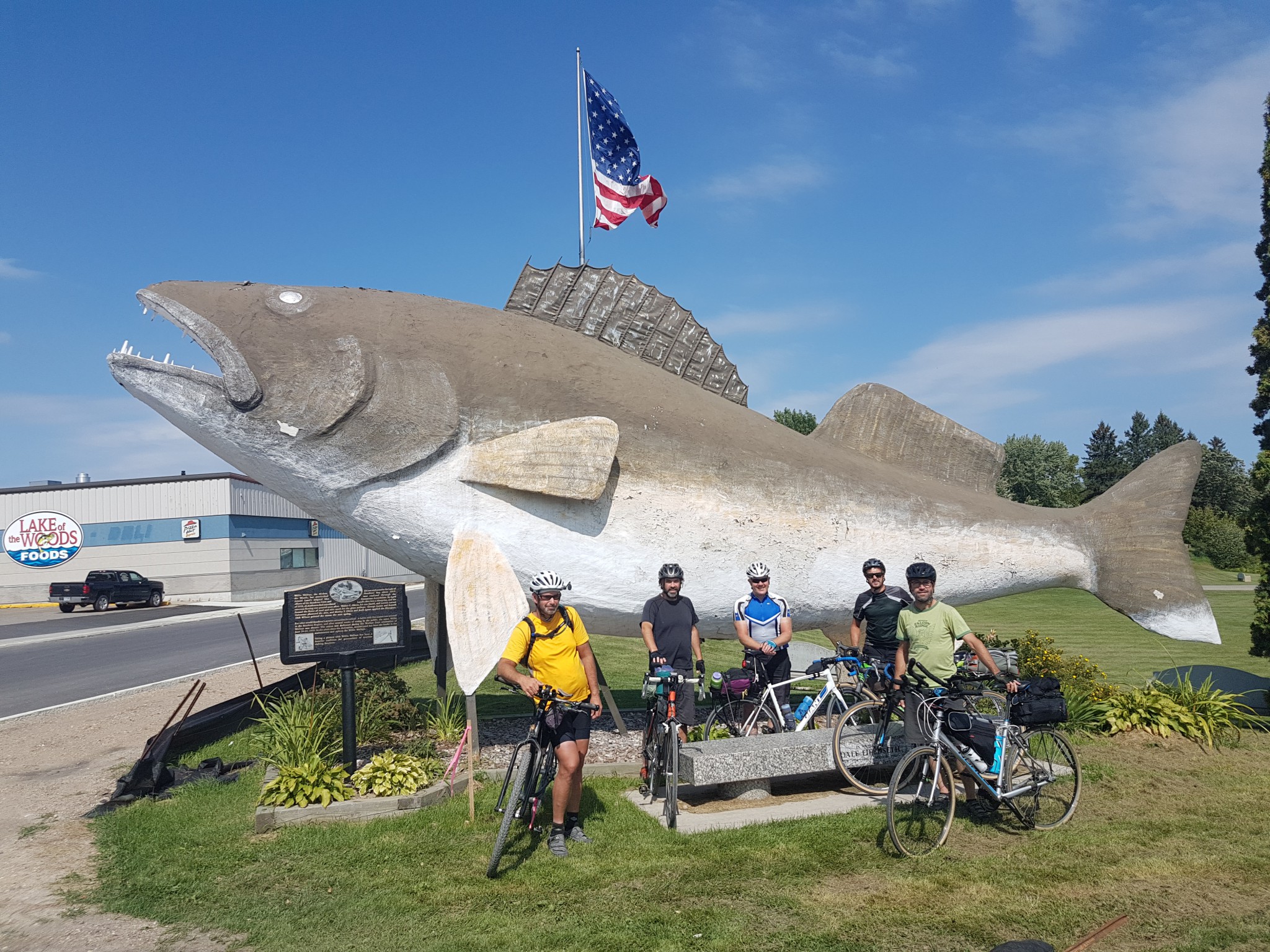News November 14, 2016
Cycling (to IISD-ELA) for Solutions (for Lake Winnipeg)
By Roger Mollot, Research Technician
After starting off as an exciting, yet challenging, way to celebrate freshwater science, Cycling for Solutions has now evolved into an annual fundraising event.
What is Cycling for Solutions?
In the summer of 2015, a small group of friends agreed to challenge themselves by cycling from Winnipeg to IISD Experimental Lakes Area (IISD-ELA) in northwestern Ontario. The catch was that they would take a detour through Minnesota and around the southern part of Lake of the Woods. The challenge was to complete this 500 km journey within three days of cycling. The goal was to make this a fundraising campaign to raise awareness of freshwater science and celebrate the 10th anniversary of the Lake Winnipeg Foundation (LWF).
The event was such a success that even more friends joined the ride this year. In fact, Cycling for Solutions 2016 saw a doubling of both the number of cyclists on the ride and the total funds raised for the Lake Winnipeg Foundation. With this upward trajectory, where can Cycling for Solutions go from here? Success can be daunting, but, admittedly, it is a good problem to have.

What was Cycling for Solutions 2016 all about?
Perhaps more important than the funds raised to support LWF, this year’s Cycling for Solutions increased the media coverage and number of individual donors. More people were talking, reading and listening to stories of the event and learning of the importance of the freshwater research conducted at IISD-ELA.
The Lake Winnipeg Foundation is an important partner of IISD-ELA. LWF recognizes the impact of research conducted by IISD-ELA, and uses the research results to advocate for stronger policy to support the management and ecological recovery of Lake Winnipeg. Much of this work draws on the scientific knowledge regarding the role of phosphorous in causing nuisance algal blooms throughout the Lake Winnipeg watershed.
To this end, Cycling for Solutions 2016 focused on raising funds to help LWF purchase phosphorous monitoring kits as part of a new citizen science program for water quality monitoring. These kits were designed by former IISD-ELA scientists, and are based on the experience of 48 years of phosphorous research findings. The kits are intended to provide volunteer citizens with the tools to collect water samples for phosphorous analysis. The information generated from this program will help establish a robust dataset on the time and location of phosphorous entering our waterways, which will, in turn, help us understand and design effective approaches to nutrient management in the Lake Winnipeg watershed.
Where do we go from here?
Cycling for Solutions exceeded its fundraising target in 2016, giving LWF sufficient funds to purchase and assemble more than 10 phosphorous monitoring kits to expand this vital citizen science initiative. The efforts of the fundraising campaign, and the pain and exhilaration of the 500 km bicycle ride, were all worth the hard work, as these efforts supported dialogue and action for freshwater science.
Next year, we hope to have more cyclists join the campaign, more people joining the dialogue on freshwater science and, certainly, more funds to directly support and expand our network of citizen scientists monitoring phosphorous throughout the Lake Winnipeg watershed, to help keep it safe and clean for generations to come.